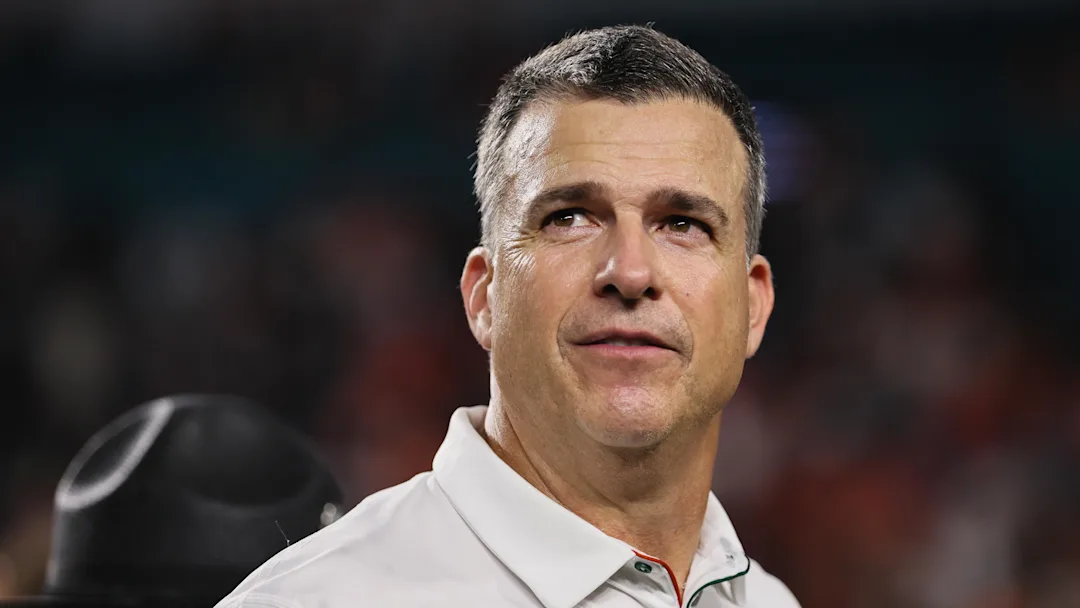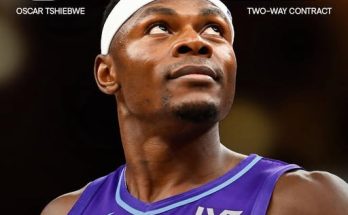Florida State’s offseason took a sharp and unexpected turn this week when its top transfer portal target announced his commitment—not to Tallahassee, but to Coral Gables. The Miami Hurricanes have officially landed the player the Seminoles were pursuing with full force, creating another twist in one of college football’s most heated rivalries. For Florida State, the miss is not just about failing to secure a talented player—it’s about momentum, perception, and how the transfer portal is rapidly reshaping the dynamics of team building and competition in the ACC.
The player in question, a dynamic playmaker who ranked among the top 10 overall transfers this cycle, had been on Florida State’s radar for months. He filled a position of need. He had ties to the state. He had the skillset to make an immediate impact. All signs pointed to FSU being in the driver’s seat after an initial flurry of contact and multiple visits. But as has often become the case in today’s transfer portal era, recruitment didn’t end when the visits stopped or when buzz favored one program. Miami kept pushing—and ultimately sealed the deal.
What makes the loss sting more for the Seminoles is how close they came to locking things up. According to multiple sources familiar with the recruitment, Florida State had put together a strong NIL package, offered a prominent role in the offense, and had players already on the roster actively recruiting the transfer behind the scenes. The staff believed they had done enough to win the battle. But Miami, never one to be outdone on the recruiting trail—especially when it involves beating their in-state rival—countered with a lucrative NIL deal of its own, along with a pitch that emphasized not just playing time, but the opportunity to be the face of the Hurricanes’ resurgence under Mario Cristobal.
For Miami, the commitment is massive. Not just in terms of talent acquisition, but for what it signals to the rest of college football. This isn’t just a program with history and branding; it’s one that’s willing to invest heavily in the transfer portal era to build a contender now. Miami has been aggressive in recruiting transfers over the past two offseasons, but this latest win may be its most high-profile portal addition yet. The player brings explosive potential and fills a major hole on the Hurricanes’ depth chart, likely stepping into a starting role from Day 1.
The timing of the announcement also couldn’t be more impactful. With summer workouts and preseason planning right around the corner, landing a player of this caliber injects new life and optimism into Miami’s fanbase and coaching staff. It’s the type of addition that can swing a close game, elevate an offense, or turn a decent season into something much more special. For Florida State, the timing feels like a gut punch. Just as the Seminoles were beginning to feel confident about their portal additions and overall offseason strategy, this sudden loss raises questions about depth, readiness, and whether they can still attract elite talent in head-to-head battles with other power programs.
FSU’s coaching staff now faces the challenge of regrouping and deciding whether to pivot to secondary targets or hope for another elite talent to unexpectedly hit the portal. The problem? The window is shrinking. Most transfers have already made their decisions, and the longer the Seminoles wait to address the hole left by this miss, the greater the risk they enter the fall with an incomplete roster. While Florida State’s recent recruiting success at the high school level has been solid, the staff had identified this transfer as a “must-get”—someone capable of being the difference between a playoff berth and a New Year’s Six bowl.
This recruiting miss also feeds into a broader conversation about the ongoing arms race in college football. The transfer portal has become more competitive than ever, and NIL has added an entirely new layer to the equation. It’s no longer just about facilities, coaching, or tradition. It’s about who can offer the most compelling total package. And while Florida State has made strides in the NIL space, this latest defeat underscores how vital it is to continue evolving and expanding those efforts to remain competitive in the upper tier of college football.
For fans, the news hit social media like a thunderclap. Florida State message boards and fan forums were flooded with a mix of disbelief, frustration, and anger. Some blamed NIL disparities. Others pointed fingers at coaching. A few acknowledged Miami’s persistence and credited the Hurricanes for landing a top-tier player in what’s shaping up to be one of their most important offseasons in recent memory. But all agreed on one thing: this was a major loss.
On the flip side, Miami fans erupted in celebration. The addition is more than just a win on the recruiting trail—it’s a public statement of intent. Cristobal has faced his share of scrutiny over the past year, with many questioning whether his vision for rebuilding The U was materializing quickly enough. But with this commitment, Miami silenced some of those doubts. The Hurricanes are not just planning for the future; they’re investing heavily in winning now.
From a rivalry standpoint, this recruitment could have ripple effects that stretch well into the regular season. Florida State and Miami have always recruited against one another, but the intensity has ramped up considerably in the NIL and transfer portal age. The implications go beyond the player himself. This could influence future portal decisions, high school commitments, and the broader perception of which Florida power is best positioned to contend nationally in the coming years. When top players see Miami beating FSU for elite talent, it can reshape the narrative—and that matters in a sport where perception often becomes reality.
As for the player at the center of it all, he’s stepping into a golden opportunity. Miami is poised to feature him prominently, and barring injury, he’ll be a key figure in the Hurricanes’ offense this fall. It’s a big stage, and expectations will be high. But his skillset—explosiveness in open space, ability to win one-on-one matchups, and a knack for big plays—makes him tailor-made for the spotlight. And with an improved supporting cast around him, he’ll have every chance to flourish and prove that his decision to choose Miami over FSU was the right one.
For Florida State, the road ahead now involves re-evaluation and adjustment. The portal window is still technically open for a short time, but high-end options are few and far between. The staff will likely explore late-available targets, or even wait until the next portal cycle, though doing so means leaning more heavily on current roster members to step up and fill the void. That’s a gamble, and one the Seminoles were hoping to avoid. But that’s the new normal in today’s landscape—where plans can change in a flash, and the margin between success and disappointment is often decided by one player, one deal, or one visit.
In the long arc of Florida State vs. Miami history, this is just the latest chapter. The two programs have traded wins and heartbreaks on the field for decades. But now, in this new era of NIL and instant eligibility, they’re doing battle off the field in ways that feel just as consequential. And in this round, Miami came out on top.
Whether this commitment ultimately swings the outcome of the 2025 season remains to be seen. But one thing is certain: it’s a win Miami desperately needed—and one Florida State will be thinking about for a long time. The war for supremacy in the Sunshine State has taken another turn, and the next time these two teams meet, this transfer’s decision will hang in the air like unfinished business, a reminder of what was gained—and what was lost.



